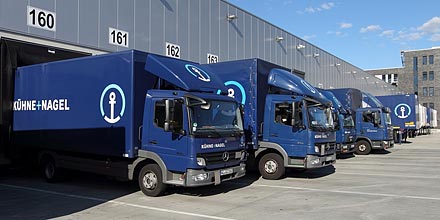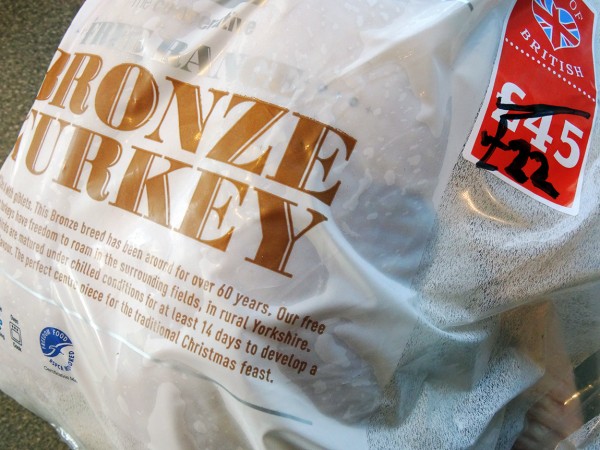 With the new Premier League football season only a week away, TV companies are heavily advertising the matches they will be showing. Until recently, BSkyB, having seen off competition from Setanta and ESPN, appeared to have an untouchable position in this market. However, competition now appears to be intensifying.
With the new Premier League football season only a week away, TV companies are heavily advertising the matches they will be showing. Until recently, BSkyB, having seen off competition from Setanta and ESPN, appeared to have an untouchable position in this market. However, competition now appears to be intensifying.
BT entered the market in 2012 by paying £738m for the rights to screen 38 Premier League matches a season for 3 seasons, with Sky showing another 116 matches. BT is clearly heavily backing its sports coverage with an initial outlay of £1.5b and them continuing to sign up high profile presenters and ambassadors including former players and a current manager.
Furthermore, BT dealt Sky (and ITV) a hefty blow last year when it outbid them to win the rights to exclusively show European club competition matches from 2015. Sky responded by saying that:
We bid with a clear view of what the rights are worth to us. It seems BT chose to pay far in excess of our valuation
If true, this would illustrate the winner’s curse which can arise in auctions. However, John Petter, chief executive of BT Retail, said that the deal demonstrated that BT Sport was committed to establishing itself in this market and countered Sky’s suggestion that they had overpaid by saying:
They would say that, wouldn’t they? Secretly, I’d expect them to be kicking themselves and full of regrets this morning
Clearly important to BT’s strategy is bundling its sports coverage in for free with their broadband packages. This is not without controversy since, at the same time as spending vast amounts of money to setup its sports coverage, BT is receiving large government subsidies to improve rural broadband provision.
An important forthcoming ruling from the Competition Appeal Tribunal will have a significant effect on how competition between BT and Sky develops. In this case Sky is accused of abusing its dominant position by refusing to supply BT’s YouView service with its sports channels at a reasonable wholesale price and could now be forced to do so.
It will also be fascinating to see how BT Sport’s strategy develops over time. BT is unlikely to continue  to provide all its coverage for free once it includes the European matches that it has won the rights to show at great expense. It will also be fascinating to see the extent to which it continues to have success in winning broadcasting rights in the future.
to provide all its coverage for free once it includes the European matches that it has won the rights to show at great expense. It will also be fascinating to see the extent to which it continues to have success in winning broadcasting rights in the future.
Competition will inevitably push up the amount that the Premier League raises in the next rights auction. Current predictions are that these will be sold for over £4bn, up from £3bn in the previous auction. This will increase the amount the Premier League clubs receive and is also likely to further push up player wages. It remains to be seen the extent to which this will benefit viewers, not to mention pubs wishing to show the games some of whom have in the past looked for alternative solutions because of the high prices they have to pay.
BT wins court battle forcing review of Sky wholesale pricing decision The Guardian, Mark Sweney (17/02/14)
BT Sport does little to lift BT TV homes informitv – connected vision (01/08/14)
BT Sport continues to invest in football line-up MediaWeek, Arif Durrani (29/07/14)
Questions
- What are the key characteristics of the market for sports broadcasting rights?
- What are the pros and cons for consumers of BT Sport’s emergence?
- How do you think Sky might respond to competition from BT Sport?
- How do you think BT Sport’s strategy might develop over time?
 Last month the Swiss air freight company Kuehne + Nagel International AG was fined just over NZ$3m (around £1.5m) by the New Zealand Commerce Commission for their part in a price fixing cartel that ran for 5 years.
Last month the Swiss air freight company Kuehne + Nagel International AG was fined just over NZ$3m (around £1.5m) by the New Zealand Commerce Commission for their part in a price fixing cartel that ran for 5 years.
In 2002 the firms in the industry faced higher costs due to increased security measures imposed by the British government. They formed a cartel to agree to pass these increased costs on to their customers for air freight services from the UK to a number of countries, including New Zealand. The investigation by the New Zealand competition authority followed a leniency application by one of the participants in 2007. Five other participants had previously been fined, but Kuehne + Nagel decided to fight the case. The fine imposed on them brought the total fines to almost NZ$12m (around £6m).
 A previous post on this site highlighted how golf played a prominent role in several previous cartels. However, this cartel seemed to have had a fixation on gardening and referred to the cartel as the gardening club. Other parties involved in the cartel were referred to as fellow gardeners and the agreed upon price as the price for asparagus! When a participant suspected a rival may have cheated on the cartel agreement email exchanges such as this one took place:
A previous post on this site highlighted how golf played a prominent role in several previous cartels. However, this cartel seemed to have had a fixation on gardening and referred to the cartel as the gardening club. Other parties involved in the cartel were referred to as fellow gardeners and the agreed upon price as the price for asparagus! When a participant suspected a rival may have cheated on the cartel agreement email exchanges such as this one took place:
I hear… concerns about the price of produce from the garden of Velcro, which appears to be operating as a charitable cooperative for the benevolence of vegetable eaters rather than growers…
It is not known whether the Kuehne + Nagel employees involved in the cartel were placed on gardening leave during the investigation!
‘Gardening Club’ hid hardcore air freight cartel New Zealand Herald, Hamish Fletcher (04/04/14)
‘Gardening Club’ Air Freight Forwarding Cartel Finally Buried by High Court Handy Shipping Guide (08/04/14)
Swiss firm fined $3.1 million over cartel 3 News (08/04/14)
‘Gardening Club’ freight cartel participant, Kuehne + Nagel, fined $3.1m The National Business Review (08/04/14)
Questions
- Why is an increase in costs likely to trigger price fixing behaviour?
- Why might the members want to use code names to run a cartel’s activities?
- Why do competition authorities grant leniency to cartel members that inform them about price fixing behaviour?
 A few months ago, in a post on this site I reported that the Competition Commission (CC) had completed their provisional investigation into the concrete and cement market in Great Britain. As I discussed, they concluded that coordination between the main cement producers was resulting in high prices. They are particularly concerned about the impact of high prices in this market because:
A few months ago, in a post on this site I reported that the Competition Commission (CC) had completed their provisional investigation into the concrete and cement market in Great Britain. As I discussed, they concluded that coordination between the main cement producers was resulting in high prices. They are particularly concerned about the impact of high prices in this market because:
Cement is an essential product for the construction and building sectors and the amount of such work that is funded by the public purse only underlines the importance of ensuring that customers get better value for money. We believe our measures can bring about a substantial, swift and lasting increase in competition in this economically vital market.
The next step was for the CC to consider how they could remedy the situation and hopefully improve competition in the market.
Earlier this month, the CC announced the remedies they intend to impose. Having previously suggested that they intended to impose hard-hitting measures, they have been true to their word. The market leader, Lafarge Tarmac, will be required to sell one of its cement plants to facilitate a new entrant into the market. According to Professor Martin Cave, the CC’s Deputy Chairman who led the inquiry:
We believe that the entry of a new, independent cement producer is the only way to disturb the established structure and behaviour in this market which has persisted for a number of years and led to higher prices for customers.
In addition, the CC is also putting in place measures to limit the publication of production data and price announcements. It is hoped that these measures will reduce transparency in the market.
However, Lafarge Tarmac disagrees with the sale they are being forced to make. This is in part because, as I discussed in the earlier post, they had previously been allowed by the CC to form a joint venture (JV) with one its main rivals:
We are disappointed that the Competition Commission has asked Lafarge Tarmac to divest another cement plant only a year after it allowed the creation of the JV. This is not reasonable or proportionate and we have not been given a fair opportunity to defend our position.
In addition, Lafarge Tarmac is quoted in the above article as suggesting that the end result of the CC’s intervention will be harm to consumers. It will be extremely interesting to monitor how this market develops.
Articles
Competition Commission confirms plan for new cement producer The Construction Index, (14/01/14)
Competition Commission improves competition in the UK. Again. Global Cement, (22/01/14)
Report
Aggregates, cement and ready-mix concrete market investigation, Final report, Competition Commission, (14/01/14)
Questions
- Why might the publication of production data and price announcements help to facilitate coordination between firms?
- Would you expect the new entrant or the measures to limit the publication of production data and price announcements to have more impact on competition in the market?
- Using a supply and demand model, describe the impact the CC’s intervention could have on the construction market.
 According to the supply and demand model, we would expect the price of turkeys to be high at this time of year. After all, last Christmas in the UK over 10 million turkeys were consumed and, therefore, this high level of demand should cause prices to rise. This is certainly what happens in other markets when there is a substantial increase in demand.
According to the supply and demand model, we would expect the price of turkeys to be high at this time of year. After all, last Christmas in the UK over 10 million turkeys were consumed and, therefore, this high level of demand should cause prices to rise. This is certainly what happens in other markets when there is a substantial increase in demand.
However, evidence from Thanksgiving in the USA suggests that this might not be the case. According to this article from the New York Times, data suggests that the price of frozen turkeys in the US falls by around 9% between October and November, coinciding with the substantial increase in demand for Thanksgiving celebrations. The article then goes on to suggest a number of plausible demand and supply-side explanations for this fall in price.
Turkey Economics 101: Why turkeys are so darn cheap this time of year Culinate (25/11/13)
Why Does Turkey Get Cheaper Around Thanksgiving? Slate, Matthew Yglesias (21/11/12)
Questions
- How elastic do you think the demand for turkeys will be at Christmas?
- What type of products are well suited to being used as loss-leaders?
- Which of the explanations for the increase in prices do you find most convincing?
- What evidence might be useful to distinguish between the different explanations?
 Apple was last week found guilty in the US for its role in the fixing of e-book prices. A subsequent hearing will now be held to determine the damages that Apple will be forced to pay. However, Apple vehemently denies the allegations and looks set to appeal the decision.
Apple was last week found guilty in the US for its role in the fixing of e-book prices. A subsequent hearing will now be held to determine the damages that Apple will be forced to pay. However, Apple vehemently denies the allegations and looks set to appeal the decision.
To understand what the US Department of Justice (the European Commission has also brought a case) is objecting to, we need to look back to how pricing in this rapidly growing market has evolved over time.
Until the end of 2009 e-books were sold under a wholesale pricing model. Here, publishers charge retailers a wholesale price per book and retailers are then free to charge final consumers whatever price they choose. This all changed in the US (there were also similar developments in Europe) during an eventful period of a few days in January 2010 when Apple unveiled its iPad for April release.
The publisher Macmillian proposed that Amazon switch to an agency pricing model under which the publisher sets the retail price. This is typically referred to by economists as Resale Price Maintenance (RPM). Interestingly, RPM has a long history in the book industry. In the UK for example, throughout most of the last century publishers set prices under the Net Book Agreement, until this broke down in the mid 1990s. In addition, in some countries, for example Germany, books continue to be sold under RPM.
Macmillan also threatened Amazon that if it preferred to keep wholesale pricing it would delay the supply of e-book releases to them. Amazon initially responded by refusing to stock Macmillan titles. However, soon after Amazon ceded to Macmillan’s proposal. Despite this, Amazon made clear its dissatisfaction to its customers:
We have expressed our strong disagreement and the seriousness of our disagreement by temporarily ceasing the sale of all Macmillan titles. We want you to know that ultimately, however, we will have to capitulate and accept Macmillan’s terms because Macmillan has a monopoly over their own titles, and we will want to offer them to you even at prices we believe are needlessly high for e-books.
It turned out that 5 of the 6 major publishers (including Macmillan) had already agreed the same agency terms to sell e-books for Apple devices. Like Macmillan, the other publishers all then also imposed agency pricing on Amazon. Furthermore, crucial to the contracts agreed with Apple was a so called ‘most-favoured customer’ clause which guaranteed that e-books would not be sold elsewhere at prices below those charged to Apple customers. Effectively, therefore, this clause made it necessary for the publishers to impose agency terms on Amazon. The Department of Justice objected to this and believed consumers would be harmed due to higher prices. All of the publishers involved eventually decided to settle the case, leaving Apple alone to fight the case in court.
In the decision Judge Cote concluded that:
the publisher defendants conspired with each other to eliminate retail price competition in order to raise e-book prices, and that Apple played a central role in facilitating and executing that conspiracy. Without Apple’s orchestration of this conspiracy, it would not have succeeded as it did in the Spring of 2010.
It is interesting to consider the reasons why the publishers would be keen to take control of the prices Amazon charges for e-books. Evidence suggests that Amazon was frequently retailing e-books at substantial discounts and even below wholesale costs. One explanation for this is that Amazon was keen to increase demand for Kindle devices. The publishers, on the other hand, might well be concerned about the implications of Amazon dominating the e-book market. Potentially, this would give Amazon significant bargaining power over them.
Of course, such dominance might also have knock-on effects on consumer prices in the long-run. Whether the publishers will be permitted to use agency pricing to mitigate such concerns in the future remains unclear and depends on whether the competition authorities object to agency pricing per se or just the coordinated way in which it was achieved.
As the articles below demonstrate, opinion is strongly divided for and against the judgement against Apple.
EU raids ebook publishers in price fixing investigation The Guardian, Benedicte Page and Leigh Phillips (4/3/11)
Apple Faces Damages Trial Over E-Book Antitrust Violation Bloomberg Businessweek, Bob Van Voris, Adam Satariano and David McLaughlin (10/7/13)
Apple played ‘central role’ in ebook price-fixing conspiracy, says federal judge The Guardian, Amanda Holpuch (11/7/13)
US: Apple found guilty, but what happens next? Competition Policy International (11/7/13)
Why It’s Insane That No One Cares About Apple’s Price-Fixing Conspiracy (AAPL) Seattle pi, Jim Edwards (13/7/13)
Apple Learns The Hazards Of Innovation With E-Book Antitrust Ruling Forbes, Daniel Fisher (10/7/13)
Questions
- What are the important features of the e-book market?
- What are the key differences between the traditional and e-book markets?
- To what extent do Amazon and Apple have different incentives in the e-book market?
- Do you think Resale Price Maintenance is more likely to harm competition in the market for traditional or e-books?
- What do you think might be the short and long-run implications of this decision?
 With the new Premier League football season only a week away, TV companies are heavily advertising the matches they will be showing. Until recently, BSkyB, having seen off competition from Setanta and ESPN, appeared to have an untouchable position in this market. However, competition now appears to be intensifying.
With the new Premier League football season only a week away, TV companies are heavily advertising the matches they will be showing. Until recently, BSkyB, having seen off competition from Setanta and ESPN, appeared to have an untouchable position in this market. However, competition now appears to be intensifying. to provide all its coverage for free once it includes the European matches that it has won the rights to show at great expense. It will also be fascinating to see the extent to which it continues to have success in winning broadcasting rights in the future.
to provide all its coverage for free once it includes the European matches that it has won the rights to show at great expense. It will also be fascinating to see the extent to which it continues to have success in winning broadcasting rights in the future.



